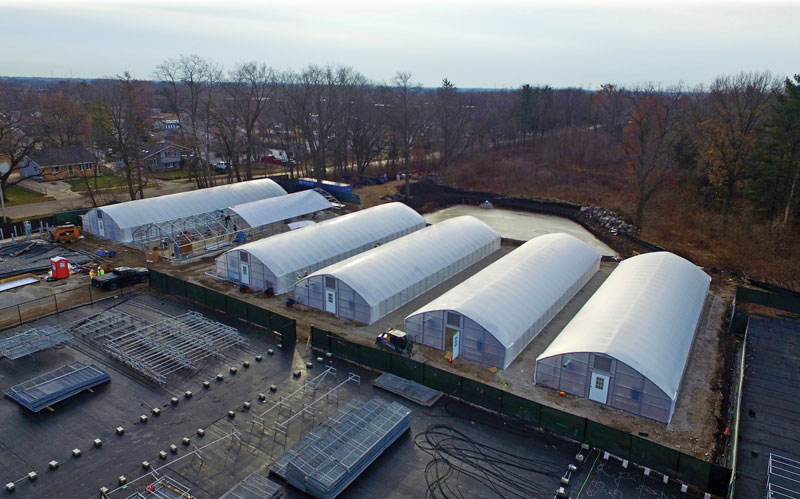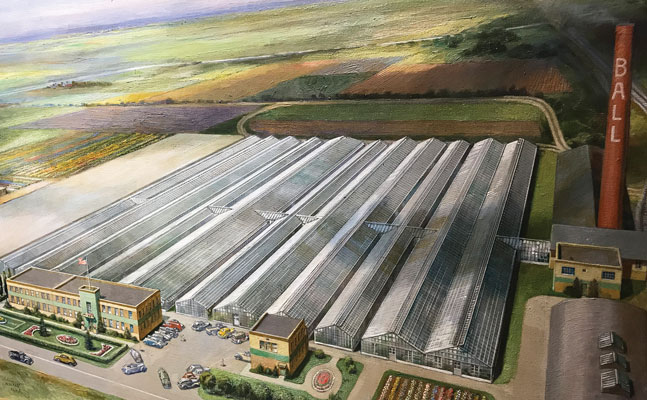1/1/2020
Why Ball Built These Greenhouses
Chris Beytes

You’re looking at the first new greenhouses constructed on the Ball Horticultural Company West Chicago, IL campus since the ’90s. Why these humble-looking freestanding houses instead of a glitzy glass range? Because “these do exactly what we need,” says R&D Greenhouse Manager Jim Kerwin, who presided over their selection.
We reported the news last summer that Ball has started construction on a big R&D center for its Helix division. Standing in the way of the new building was a 12,000 sq. ft. glass and aluminum gutter-connect house and 10,000 sq. ft. of assorted cold frames, all of which were used to grow plants for the gardens and other various trial needs.
Jim was given a spot south of the gardens and adjacent to Ball’s “backroom” trialing areas (affectionately known as Area 51/Roswell), where he could consolidate all of the garden crop production. Given a clean slate, but a tight budget, he opted for five “RT Max Muscle” freestanding houses from Atlas Greenhouse of Georgia. The 30 ft. x 96 ft. double poly houses have a gothic arch design for strength, and 6-ft. sidewalls with roll-down curtains for good natural ventilation. Jim says that will let him harden off crops in a way he couldn’t do in the old glass house.
 Pictured: Ball’s original greenhouses, circa 1947. Freestanding houses worked then and they still work today
Pictured: Ball’s original greenhouses, circa 1947. Freestanding houses worked then and they still work today
The house still getting its cover is Atlas’ “Educator” model, designed for polycarbonate glazing. This will serve as a “headhouse” to the range and for the earliest plant production, since polycarbonate is more winter storm-resistant than poly.
All six houses are equipped with Modine heaters, variable-speed direct drive fans, gable exhaust fans and powered louvers, and powered side curtains. That mix of equipment gives Jim multiple stages of ventilation, all controlled by the Argus computer located at Ball’s main greenhouse range.
“They are probably the best houses, hands down, to grow annuals and perennials for the gardens,” he says of the new range. “We can start the plants earlier, and grow them slower and colder so they’ll take off running when we pot them up and lay them out. Are they a very necessary tool in the greenhouse toolbox? Yes! They’ll be a very important addition to our greenhouses.” GT